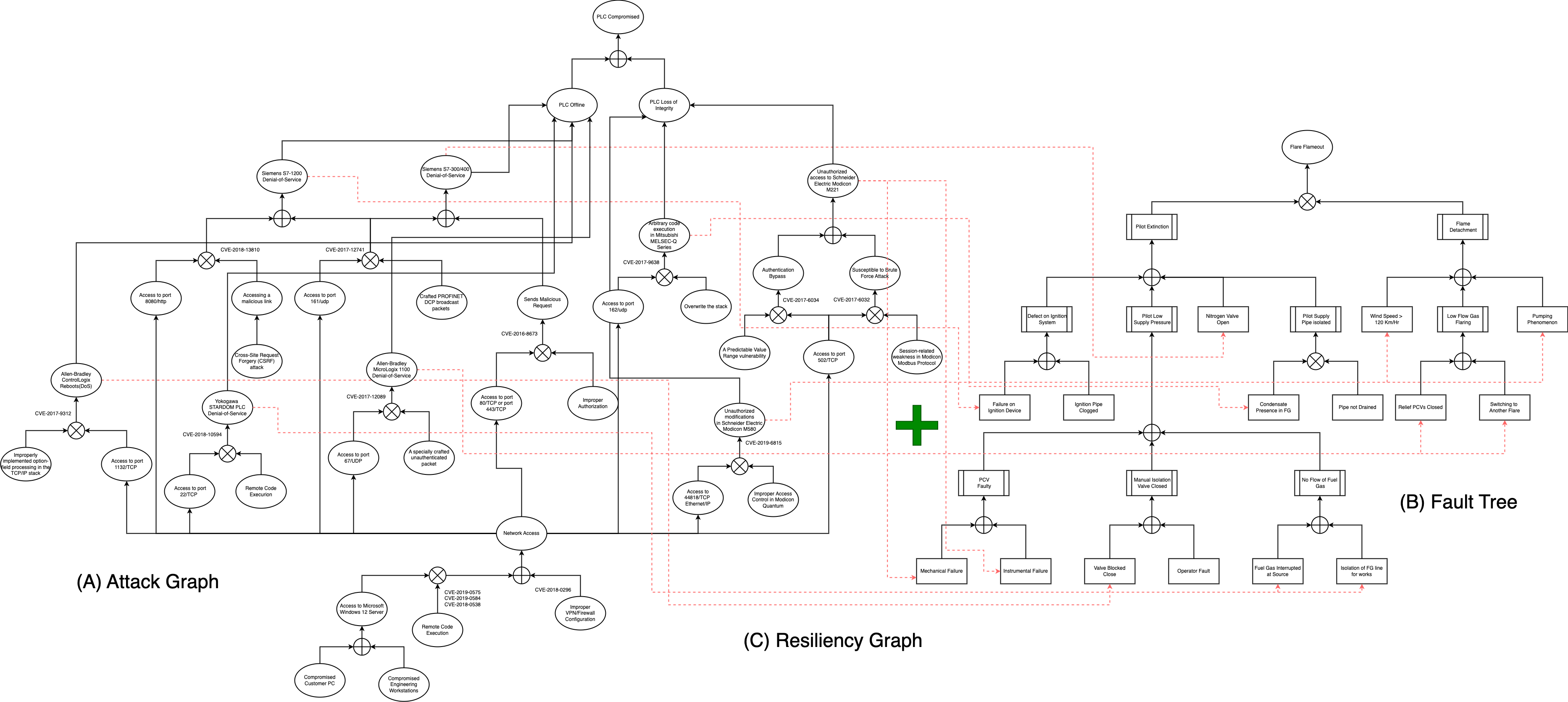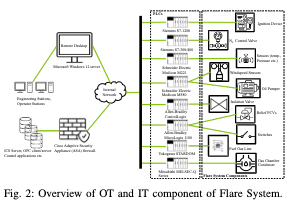Overview
We present a novel modeling paradigm, Resiliency Graph (RG), that combines the power of Natural Language Processing (NLP) and AI Planning (PDDL) to evaluate and analyze how a cyber-attack can trigger safety events in Cyber-Physical Systems (CPS).
Research Objectives
- Model the interplay between cyber-attacks and system-level failures in CPS.
- Integrate Attack Graphs and Fault Trees into a unified Resiliency Graph (RG).
- Leverage AI Planning to analyze resiliency posture and failure causality.
- Provide actionable insights to ICS operators for enhancing system resiliency.
Methods
Our deterministic approach represents both system failures and cyber-attacks as a structured set of prerequisites and outcomes using a novel AI planning language. AI Planning chains together the causes and consequences across both domains. RG uses AI Planning (via PDDL) to establish associations between vulnerabilities and system failures, enabling operators to evaluate and manage system resiliency in complex CPS/ICS environments.
Visualizations



Impact
Operation efficiency in CPS has been significantly improved by the digitalization of ICS. However, this exposes ICS to cyber attacks that can trigger critical system failures. The RG framework allows ICS operators to identify how cyber attacks propagate into physical system faults, and how to mitigate these risks proactively. Our empirical evaluations validate the framework's effectiveness and scalability on large ICS network configurations. This work provides a new direction for integrating cybersecurity and safety analysis in industrial and critical systems.